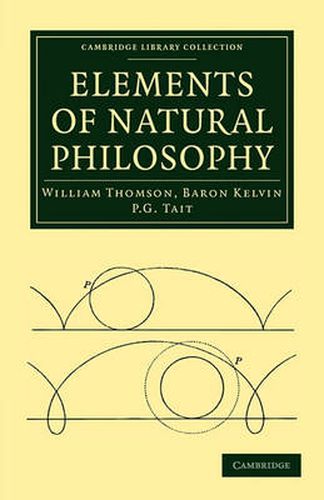Readings Newsletter
Become a Readings Member to make your shopping experience even easier.
Sign in or sign up for free!
You’re not far away from qualifying for FREE standard shipping within Australia
You’ve qualified for FREE standard shipping within Australia
The cart is loading…






In 1867, Sir William Thomson (later Lord Kelvin) and Peter Guthrie Tate revolutionised physics with the publication of their Treatise on Natural Philosophy, in which they demonstrated the centrality of energy conservation to systems of dynamic movement. Popularly known as ‘T&T’ for its authors’ initials, the Treatise became the standard textbook on natural philosophy, introducing generations of mathematicians to the ‘new energy-based dynamics’. In Elements of Natural Philosophy (1873), they distil the portions of the Treatise not requiring higher calculus into a primer suitable for use in university courses. The first half covers the basic principles of kinematics and dynamics, including the motion of points, lines, and volumes, while the second half concerns questions of ‘abstract dynamics’, including particle attraction. The result of one of the most important collaborations in modern physics, this book remains a thorough introduction to the major principles of Thomson and Tait’s larger work.
$9.00 standard shipping within Australia
FREE standard shipping within Australia for orders over $100.00
Express & International shipping calculated at checkout
In 1867, Sir William Thomson (later Lord Kelvin) and Peter Guthrie Tate revolutionised physics with the publication of their Treatise on Natural Philosophy, in which they demonstrated the centrality of energy conservation to systems of dynamic movement. Popularly known as ‘T&T’ for its authors’ initials, the Treatise became the standard textbook on natural philosophy, introducing generations of mathematicians to the ‘new energy-based dynamics’. In Elements of Natural Philosophy (1873), they distil the portions of the Treatise not requiring higher calculus into a primer suitable for use in university courses. The first half covers the basic principles of kinematics and dynamics, including the motion of points, lines, and volumes, while the second half concerns questions of ‘abstract dynamics’, including particle attraction. The result of one of the most important collaborations in modern physics, this book remains a thorough introduction to the major principles of Thomson and Tait’s larger work.